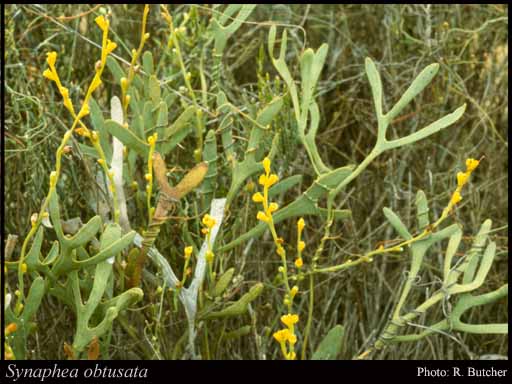- Reference
- Fl.Australia 16:492 (1995)
- Conservation Code
- Not threatened
- Naturalised Status
- Native to Western Australia
- Name Status
- Current
Low, rounded shrub, 0.1-0.6 m high. Fl. yellow, Jul to Nov. Grey sand, gravelly sand or loam, sometimes swampy soils. Stony hillsides, sandplains.

Scientific Description
Shrubs; branchlets hairy. Leaves alternate, 135-300 mm long, glabrous; petiole glabrous; lamina terete or flat, once divided or twice or more divided, pinnately divided or tripartitely divided, deeply divided or divided to the midrib; distance from base of leaf to lowest lobe 80-220 mm; terminal leaf lobe 7-25 mm long, 2-7 mm wide; lowest lobes 35-80 mm long. Inflorescences yellow; scape 90-250 mm long; floral bracts 2.5-3 mm long. Perianth 6.5-7.5 mm long, glabrous; adaxial tepal 6.5-8.3 mm long; abaxial tepal 5.5-6.5 mm long; ovary hairy, style glabrous; style including stigmatic disc 5-6 mm long, strongly concave; stigma 1.4-2.6 mm long, 1-1.3 mm wide. Follicles 6.5-7.5 mm long. Flowers in July, August, September, October or November. Occurs in the South-west (SW) Botanical Province(s), in the Avon Wheatbelt (AW), Jarrah Forest (JF), Warren (WAR) or Esperance Plains (ESP) IBRA subregion(s).
Distribution
- IBRA Regions
- Avon Wheatbelt, Esperance Plains, Jarrah Forest, Warren.
- IBRA Subregions
- Fitzgerald, Katanning, Northern Jarrah Forest, Recherche, Southern Jarrah Forest, Warren.
- IMCRA Regions
- WA South Coast.
- Local Government Areas (LGAs)
- Albany, Boddington, Boyup Brook, Bridgetown-Greenbushes, Broomehill-Tambellup, Collie, Cranbrook, Denmark, Esperance, Gnowangerup, Kojonup, Manjimup, Narrogin, Plantagenet, Ravensthorpe, Wandering, West Arthur, Williams, Woodanilling.